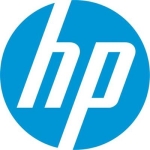What is our primary use case?
We use 365 Defender with Outlook, Teams, and SharePoint. Our organization extensively uses these products as do the clients we serve. Our goal is to secure those email, SharePoint, and Teams environments.
How has it helped my organization?
Our Microsoft security solution has helped eliminate having to look at multiple dashboards. For a wholesale view over the entire infrastructure, Sentinel is the place to go. But M365 Defender alone only covers 30 to 40 percent of the infrastructure.
We have saved a lot of time compared to having to do tasks with other tools. With Microsoft, it's easier for us to manage and handle them. It saves us about 40 percent of the time it would have taken us. That includes the automating of detection and response.
What is most valuable?
The most valuable feature is the DLP because that's where we can have an added data protection layer and extend it not just to emails but to the documents that users are working on. We can make sure that sensitive data is tagged and flagged if unauthorized parties are using it.
The information that the solution provides is pretty clear because I have an overall picture from the compliance dashboard, which is now called the Azure Purview Compliance dashboard or manager. It has all the information, including the DLP information, sensitive data being shared, threat protection, and attacks. All of that is on a single dashboard where I see what the state of security is.
We use the entire suite of Purview features, including Sentinel, Defender for Cloud Apps, Defender for Endpoint, and even new features like Microsoft Defender for DevOps. Sentinel is the out-of-the-box SIEM tool that should definitely be used for more visibility on the M365 side. Of course, we have the compliance dashboard, but Sentinel acts as the single point of contact for visibility into all devices. That way we can see, if there are any threats or vulnerabilities, what the dependent resources are. Sentinel helps give us that bigger picture. We also use Defender for Identity and Defender for Cloud, with different features for the different aspects within the cloud, such as various servers and DNS, et cetera.
With its different connectors, Sentinel enables us to collect data from our entire ecosystem. All the logs are injected into a workspace in Sentinel where Sentinel can analyze them. If we unlock the Microsoft threat intelligence program, which is part of Sentinel, we can investigate threats and respond holistically from one.
Integrating these products is pretty simple. Microsoft Sentinel integrates really fast. Obviously, it's from the same stack so it's easy for us to integrate with just the click of a button. The connectors then help us integrate these services.
If we have all these products in use, we can achieve a 90 to 95 percent security maturity model, without requiring any other vendors' solutions to protect resources.
What needs improvement?
There are two areas where I feel there is no Microsoft solution. One is vulnerability management, where Microsoft is partnered with Qualys. The other is a penetration testing tool on the preventive side. That would be more for an ad hoc request and not for everyday functions. Apart from these, all the other areas can be covered with Microsoft solutions.
There is definitely scope for improvement in the automation area. Because the solution is a SaaS platform, we don't have the overall ability to automate stuff. By integrating Microsoft 365 Defender with Sentinel, we can definitely automate things. We can leverage playbooks, and execute Terraform scripts. But directly automating tasks in the 365 Defender is something we have to do with PowerShell, which is then connected to Exchange Online. There is no direct way to go ahead because it's a SaaS platform. But if you integrate it with Sentinel, where all the alerts are created and action needs to be taken, it is pretty comfortable for automation.
Also, I would like to see it be a lot less policy driven. On the M365 side, there are a lot of policies that we need to enable to achieve a certain task. There is no direct solution; rather, there are a lot of workarounds.
I understand that Microsoft is dealing with a lot of tools at once and having a direct solution is not viable. But I would hope that Microsoft can improve that side of it.
For how long have I used the solution?
I have been using Microsoft 365 Defender for more than five years.
What do I think about the stability of the solution?
It's a pretty stable solution and in terms of the SLAs it is pretty good. When it comes to applying policies and the standard documentation that Microsoft provides, everything works according to that. I would rate the stability a nine out of 10.
What do I think about the scalability of the solution?
It surely is a scalable solution, being a service that Microsoft offers.
How are customer service and support?
The technical support is not great. I have been working with these Microsoft products for quite some time, and I have raised issues and contacted them. Every support case I have raised has needed escalation. From my experience, the first-line support team doesn't have anything other than out-of-the-box solutions. Everything with that level of support is pretty standard, SOP-driven, and documentation driven. That is nice, but only to a certain point. When we are talking about the SOP that a level-one engineer does, that's when the support is very poor.
How would you rate customer service and support?
Which solution did I use previously and why did I switch?
We previously had on-prem solutions. For Exchange and for endpoints, we used to have McAfee, but that was more than five years ago. Previously, Defender for M365 used to be ATP, Advanced Threat Protection, and that's when we started using it.
Previously, we had many things on-prem, such as Exchange Servers, SharePoint, and database servers. But as Microsoft drove toward cloud-native solutions and moved Exchange, SharePoint, and Dynamics 365 online, moving to M365 was a part of the move.
How was the initial setup?
There is no straightforward solution with Microsoft. There are definitely a few restrictions and limitations. We should go ahead and call that out and there were definitely challenges.
The major challenge was moving the mailboxes from on-prem Exchange to Exchange Online. That was not straightforward because the goal was not to lose any emails, and that certain format-related issues be taken care of.
We followed a waterfall method with a proper plan of action. We performed a PoC first, to make sure that the test users were migrated successfully. Once that was done, we did a proper plan in terms of department hierarchy for migrating our departments and detailed a plan of action in case there were any failures. We then did a proper pilot where we chose about 25 mailboxes for migration, and then we went ahead and migrated everyone.
One of the reasons it took six months was there were only five of us involved.
Because it is a SaaS service, Microsoft promises three nines of uptime. There is no maintenance on our side.
What was our ROI?
We are seeing a return on investment compared to the same types of solutions that we used to have five years ago. We would have spent more than what we are spending right now. It's not just about the licensing, it's also about the team that manages it and the operations side of it. But compared to how things were, the return on investment has been positive.
I doubt that we are saving money with this solution because all the features are only available with a Microsoft 365 E5 license, which is the highest. And that doesn't come cheap because it's on a per-user basis. If there are 1,000 users, you are investing a lot.
What's my experience with pricing, setup cost, and licensing?
The pricing model of Sentinel is entirely different from any other standalone SIEM tool. Other tools work on a licensing model with a fixed price based on the different modules that are enabled. Sentinel is not a fixed price. It depends on how much data is injected into it. With Microsoft, if there are 100 GB per month, it's about $2.30 per GB, or around $2,000 on a monthly basis. Compared to a fixed licensing cost, where organizations know that there is a certain budget they need to put aside for the license, on the Microsoft side, we really can't anticipate the cost.
The pricing of Microsoft 365 Defender is definitely on the costly side, but with the features and services that Microsoft provides, such as the seamless integration of all the Defender tools, while the price is on the higher side, there is no alternative.
What other advice do I have?
My advice would be to try out Microsoft and compare it with other vendors. If your vision for Microsoft includes needing customizations and a lot of use cases, I don't think Microsoft M365 would support that. Where Microsoft shines is the seamless integration and dealing with less configuration management. But at the same time, organizations are adopting other solutions, such as Linux, and they want customization and that is not possible on the Microsoft side.
Microsoft 365 Defender helps prioritize threats to the enterprise, but not alone. Rather, it is through combining it with other Defender products like Defender for Cloud Apps and Defender for Endpoint. All these, in combination, can provide really good security, visibility, and threat protection against any vulnerabilities or threats. But with just M365, our hands are tied with the scope, which is limited to emails, Teams, and SharePoint.
We can't 100 percent automate things, but we can automate about 80 percent of our tasks. It has made life easier. But, at the same time, if a scenario is not something that repeats, performing an activity automatically would reduce the time spent, but not by that much. We have automated a few areas for things that occur on a regular basis, but at the same time, we come across situations now and again that we think about automating, but we also think about the effort that we would have to put into doing so. Will it be a recurring solution or not?
There are also some advancements that Microsoft has launched to automate threat surface reduction, some features that we could try to help us analyze steps to be taken before an attack happens, but nothing that I have tried yet.
Hypothetically, when looking at whether a single vendor or a best-of-breed strategy is best, being an architect the last couple of years, what I've seen is that having a multi-vendor system is definitely a good approach rather than going with a single vendor solution. Even though Microsoft has all these tools, we can't achieve 100 percent security. There are the areas for improvement that I mentioned, where Microsoft doesn't have a single solution, like pen testing and vulnerability management. My suggestion is always to go with a multi-vendor solution. Microsoft might reach a level where, at a certain point, they will have 100 percent coverage, but my approach would still be multi-vendor.
Disclosure: My company has a business relationship with this vendor other than being a customer. Partner
















